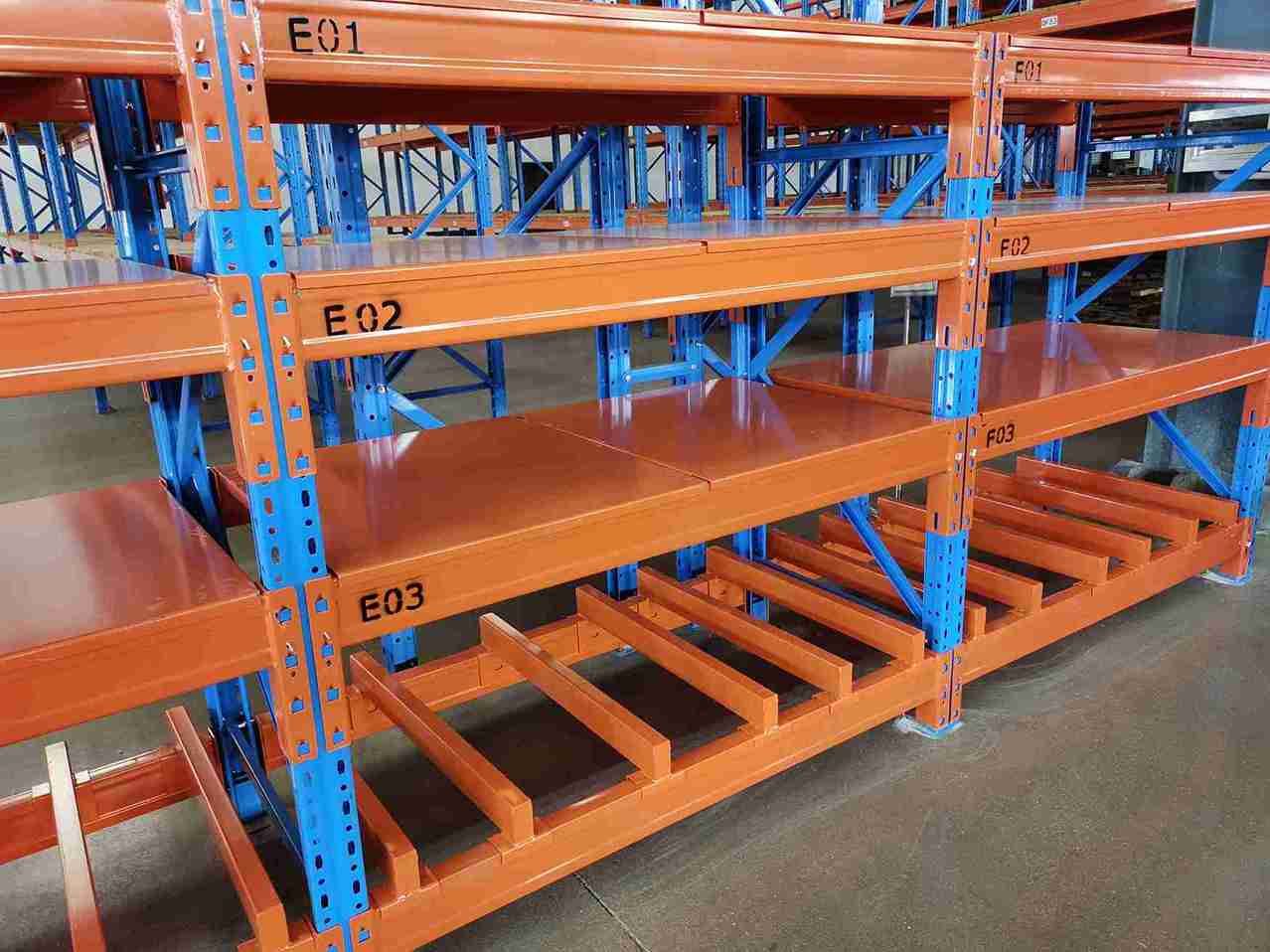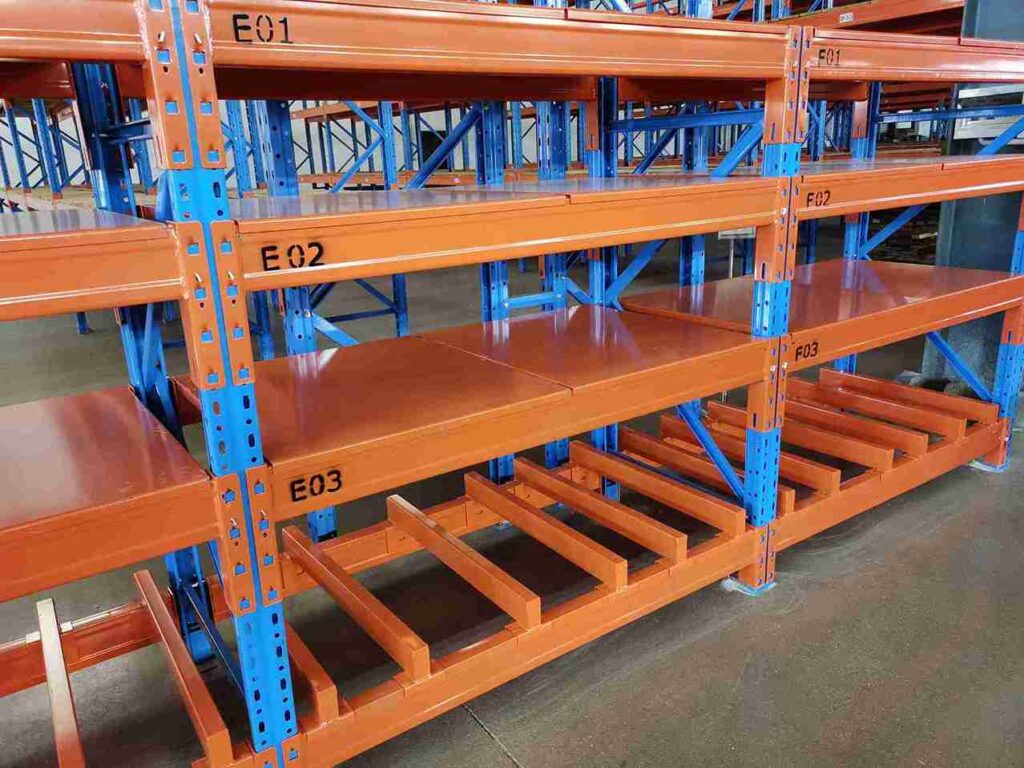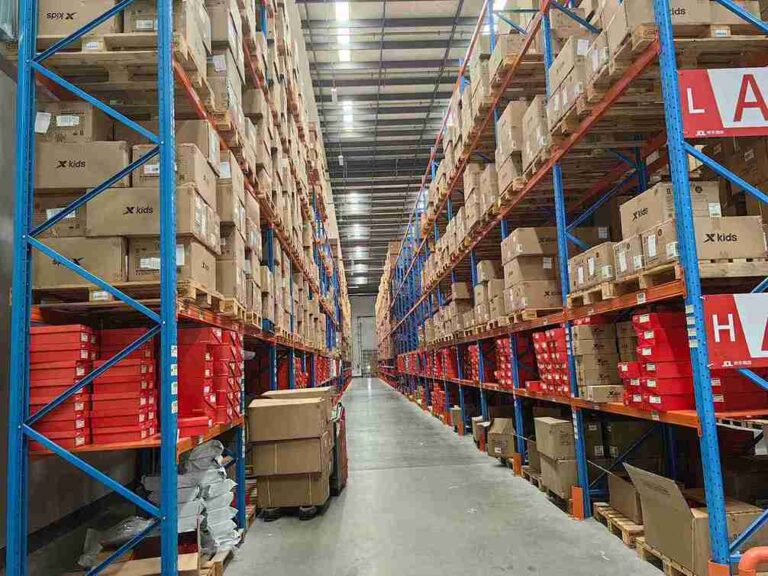📐 "First 50 Enterprise Queries Get Custom 3D Warehouse Design" Plan

Introduction: Why Pallet Racking Dimensions Matter
Selecting the correct pallet racking dimensions is one of the most critical decisions in warehouse design. The right pallet racking dimensions directly impact storage density, operational efficiency, and workplace safety. Whether planning a new warehouse layout or upgrading an existing system, understanding pallet racking dimensions ensures optimal space utilization and cost savings.
This comprehensive guide explores every aspect of pallet racking dimensions, including:
- Standard pallet racking dimensions (upright heights, beam lengths, and depth variations)
- How pallet racking dimensions affect storage capacity
- Key differences between selective, drive-in, push-back, and other racking systems
- Calculating load capacities based on pallet racking dimensions
- Safety considerations when selecting pallet racking dimensions
By the end of this guide, warehouse managers, logistics professionals, and business owners will have a clear understanding of how to choose the best pallet racking dimensions for their specific needs.

1. The Fundamentals of Pallet Racking Dimensions
1.1 What Are Pallet Racking Dimensions?
Pallet racking dimensions refer to the height, width, and depth of a racking system. These measurements determine:
- How many pallets can be stored
- Accessibility for forklifts and workers
- Maximum weight capacity per level
The three primary pallet racking dimensions are:
- Upright Height – Vertical frame measurement (6 ft to 40 ft)
- Beam Length – Horizontal shelf width (42″ to 144″)
- Depth – Front-to-back space (36″ to 288″)
1.2 Why Are Pallet Racking Dimensions Critical for Warehouse Efficiency?
Choosing incorrect pallet racking dimensions leads to:
- Wasted vertical or horizontal space (underutilized storage)
- Forklift accessibility issues (narrow aisles causing bottlenecks)
- Safety hazards (overloading, rack collapse, or pallet damage)
Proper pallet racking dimensions ensure:
✔ Higher storage density (more pallets in the same footprint)
✔ Faster loading/unloading (optimized for forklift movement)
✔ Compliance with OSHA & RMI safety standards
2. Standard Pallet Racking Dimensions Explained
2.1 Upright Frame Dimensions (Height & Width)
The upright frames (vertical columns) determine the maximum height of the racking system. Common pallet racking dimensions for uprights include:
- Height: 6 ft to 40 ft (adjustable in 3″ to 6″ increments)
- Width: 42″, 48″, 60″, or 96″ (based on beam length)
Pro Tip: Taller racks (over 20 ft) often require additional bracing for stability.
2.2 Beam Lengths (Determining Rack Width)
Beam length defines how many pallets fit side-by-side. The most common pallet racking dimensions for beams are:
- 96″ (8 ft) – Fits two standard 48″ pallets
- 120″ (10 ft) – Holds three 40″ pallets
- 144″ (12 ft) – Used for bulk storage
Industry Insight: Longer beams (over 120″) may require stronger materials to prevent bending under heavy loads.
2.3 Depth Variations (Single-Deep vs. Double-Deep Racking)
The depth of a pallet rack affects storage density and accessibility:
| Racking Type | Typical Depth | Best For |
|---|---|---|
| Single-deep | 36″ – 48″ | Selective access (each pallet is reachable) |
| Double-deep | 72″ – 96″ | Higher density (two pallets deep) |
| Drive-in | 144″ – 288″ | High-density, LIFO storage |
3. How Pallet Racking Dimensions Vary by Rack Type
3.1 Selective Pallet Racking Dimensions
- Most common system (direct access to every pallet)
- Standard pallet racking dimensions:
- Beam length: 96″ – 144″
- Upright height: Up to 40 ft
- Depth: 36″ – 48″
Best for: Warehouses with high SKU variety and frequent pallet movement.
3.2 Drive-In & Drive-Through Racking Dimensions
- Designed for high-density storage (fewer aisles needed)
- Key pallet racking dimensions:
- Depth: 144″ – 288″ (12 ft – 24 ft)
- Height: Up to 30 ft
- Beam length: 96″ – 144″
Best for: Cold storage, bulk goods, and FIFO/LIFO systems.
3.3 Push-Back Racking Dimensions
- Uses a gravity-fed cart system for dense storage
- Typical pallet racking dimensions:
- Depth: 120″ – 180″ (10 ft – 15 ft)
- Height: Up to 25 ft
Best for: Medium-turnover inventory with multiple SKUs.
4. Calculating Load Capacity Based on Pallet Racking Dimensions
4.1 Understanding Weight Limits
The load capacity of a pallet rack depends on:
- Beam strength (light, medium, or heavy-duty)
- Upright frame thickness (11-gauge vs. 14-gauge steel)
- Floor load rating (concrete flooring must support the rack weight)
4.2 How to Determine the Right Pallet Racking Dimensions for Your Loads
Follow these steps to calculate optimal pallet racking dimensions:
- Measure pallet sizes (length, width, height).
- Choose beam length (based on pallet width).
- Determine upright height (considering warehouse clearance).
- Verify load capacity (check manufacturer specs).
Example Calculation:
- Pallet size: 48″ x 40″
- Required beam length: 96″ (for two pallets side-by-side)
- Upright height: 20 ft (allowing 5 levels of storage)
- Total capacity per bay: 10,000 lbs (2,000 lbs per level)
5. Custom vs. Standard Pallet Racking Dimensions: Which Is Better?
5.1 Advantages of Standard Pallet Racking Dimensions
✔ Lower cost (mass-produced, readily available)
✔ Faster installation (no custom fabrication delays)
✔ Easier to expand (compatible with most warehouse layouts)
5.2 When to Consider Custom Pallet Racking Dimensions
✔ Non-standard pallet sizes (oversized or irregular loads)
✔ Low-ceiling warehouses (requires shorter uprights)
✔ Automated storage systems (custom integrations needed)
6. Safety Considerations for Pallet Racking Dimensions
6.1 Avoiding Overloading & Collapse Risks
- Never exceed weight limits (check beam & upright ratings).
- Use load signs to indicate maximum capacity per level.
6.2 Proper Aisle Width & Clearance
- Standard forklifts need 8 ft – 12 ft aisles.
- Narrow-aisle forklifts require 5 ft – 7 ft.
6.3 Regular Inspections & Compliance
- Check for bent beams, damaged uprights, or loose bolts.
- Follow OSHA & RMI safety guidelines.
7. Frequently Asked Questions (FAQs)
Q1: What is the most common beam length for pallet racking?
The 96″ (8 ft) beam is the industry standard, fitting two 48″ pallets side-by-side.
Q2: How tall can pallet racking be?
Most warehouses use 20 ft – 30 ft uprights, but some facilities go up to 40 ft with reinforced structures.
Q3: Can I adjust pallet racking dimensions after installation?
Yes, beams can be repositioned, but upright height adjustments may require professional assistance.
Q4: What’s the minimum aisle width for a forklift?
For standard forklifts, 8 ft – 12 ft is recommended; narrow-aisle forklifts need 5 ft – 7 ft.
Q5: How do I know if my floor can support pallet racking?
Consult a structural engineer to assess floor load capacity before installation.
Conclusion: Choosing the Right Pallet Racking Dimensions for Your Warehouse
Selecting the correct pallet racking dimensions is essential for maximizing storage efficiency, ensuring safety, and reducing operational costs. By understanding standard pallet racking dimensions, load capacities, and safety best practices, businesses can optimize their warehouse layouts for peak performance.
Need expert advice on pallet racking dimensions? Contact our team for a free consultation and customized storage solutions!




